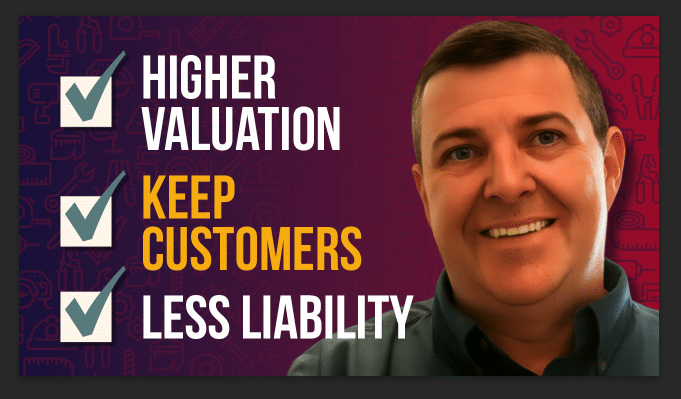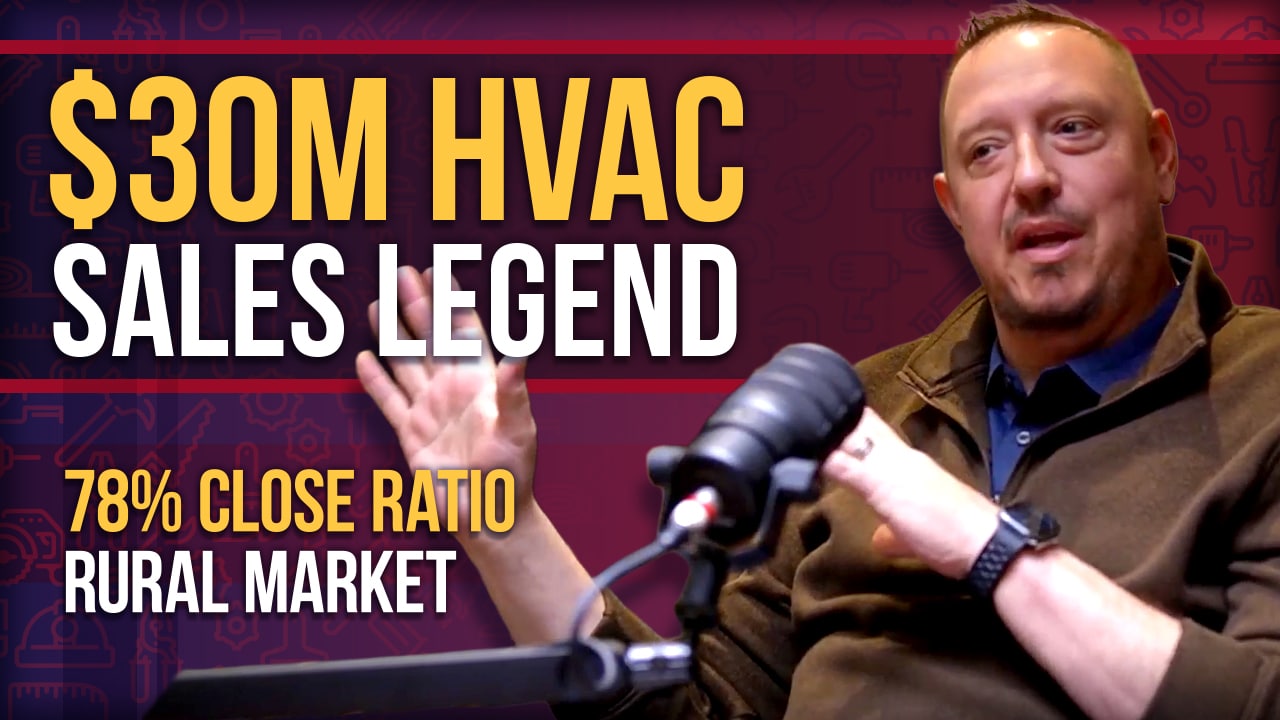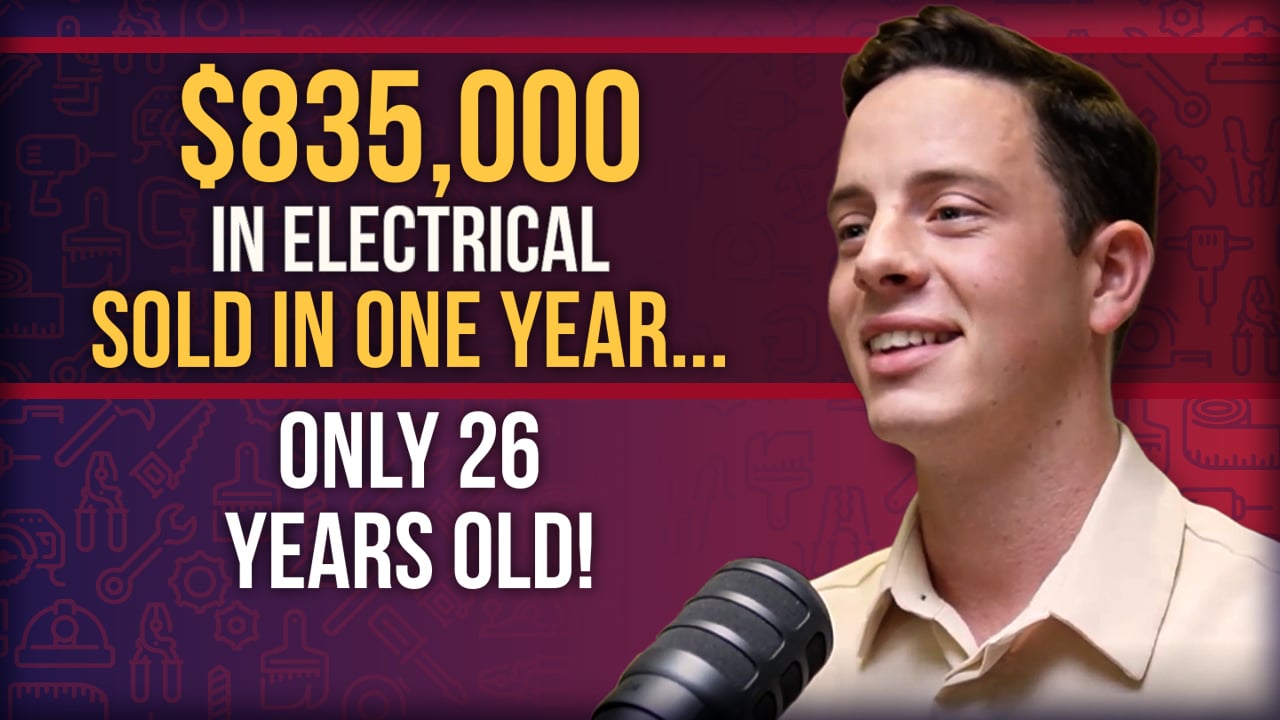Andrew Dobbins, Owner of the Tucson, Arizona–Based Business, Projects the Company Will Generate Between $8 to $9 Million by the End of 2020. A Huge Leap from the $5.9 Million Sold in 2019.
This story is an approximate transcription of a “The Successful Contractor” podcast interview with Andrew Dobbins. “The Successful Contractor” podcast, powered by Success Group International, is a show for residential contractors about residential contractors. It chronicles business journeys, shares insights, and celebrates successes in this wonderful industry of the trades and tradespeople.
Following a proud career in the United States Marine Corp, Andrew Dobbins went searching for what the next chapter in his life would bring. He took a position doing jewelry sales in the mall. It transformed his life. Andrew discovered a newfound skill and a calling.
“I found that I was good at sales,” he said. “I quickly maxed out at that job in a very short time. I went to a job service center here in Tucson. There was a listing for a salesperson at an air-conditioning company. I interviewed, and that was 16 years ago.”
Today, Andrew—along with his wife Aimee—owns Intelligent Design, a residential-service company that offers HVAC, plumbing, solar, and electrical services. And in 2020, business has been very good. Andrew projects total sales will fall between $8 to $9 million by the end of the year—and it will be generated at a strong, double-digit profitability. It will be a huge leap from 2019, where the company sold $5.9 million.
Although Andrew continues to grow as a business operator, he will proudly tell you, he is still a salesperson at heart. “It’s my core competency,” he explained. “It’s what I rely upon when I need to. The rest, I’m still learning, but we have a great team and we’ve come a long way in a short period of time.”
Andrew founded Intelligent Design in 2011—shortly after selling his 50 percent interest in an HVAC company he started with a partner two years prior. “We got up to two million when I sold,” Andrew explained. “I started over in my garage. I went out and sold [equipment]. I had two install crews, one service tech, and we did $3.85 million in the first 12 months. It was exciting. With low overhead, I was able to put a lot of money in the bank. We were able to buy a property outright within a couple years—then, we started to market and grow.”
“By 2015, we got up to six million dollars, but we became less and less profitable as we continued to grow. I had to figure something out. I wanted to keep growing, but I wanted to be profitable, and we weren’t. I mean I was still doing okay, but I wasn’t hitting those double-digit net profits like I expected. That’s why we joined SGI and started implementing the system,” Andrew continued.
By 2016, Andrew jumped headfirst into a new endeavor—he opened a second location in Phoenix and moved his family to manage it. He entrusted a manager to maintain and grow his Tucson branch. “I thought we were doing great, and then Tucson started going backwards. By the time I noticed, I was half a million in the hole and two weeks from not making payroll. It was chaos,” Andrew shared.
Andrew leapt into action, returning to Tucson to get his original location back in the black. “That’s when I found another problem. I was basically gone for a year and a half. The manager I put in charge had been bringing in new people. He had influence and tried to stage a mutiny. I believe he was pushing the numbers down to try and buy the company for pennies on the dollar. Thankfully, some of my loyal people told me what was going on. I fired him and a bunch of other people,” he continued. “I started taking all the sales calls and started selling about $400,000 a month. Then, after about 10 weeks, I started weaning the leads back to the remaining sales guys. We made money that year, but it was hell on wheels to get there.”
Andrew ultimately decided to shutter his Phoenix location and concentrate all his efforts in Tucson. “Before I left for Phoenix, we were doing six-million dollars. That chaotic year, we dropped back down to $3.8 million, which is what we did our first year. So, we had a rebuilding process. Finally, last year, we got back up to six million. And we made really good money over the last two years. Double-digit net profits both last year and the year before.”
Andrew is incredibly excited for the future. He shared the lessons he learned over his journey in starting and growing Intelligent Design. In addition, he reveals much of his sales process that creates such remarkable results. Please, enjoy our conversation. For the full interview, please subscribe to “The Successful Contractor” Podcast, where you can hear the elongated version of the interview.
What are some changes you made in Tucson to recapture your profitability? It sounds like you’ve always been priced right, correct?
With my sales background, I’ve never had problems selling at a higher price than our competitors. So, we are at the top of the market, not the very top, but close, and we sell a lot of accessories. Our average tickets are very high because we do some unique things that other people don’t do. So that was never an issue. It was always, where am I losing money within the company that I shouldn’t be? Yeah, that was basically my issue. And it still is—I’m not perfect there, still. I’m still learning and growing and trying to figure that end of things out.
What two or three things did you address once you returned to turn your profitability around?
Yeah. I had a general manager in place because I was selling. So, eliminating that position and being that guy has helped. No one cares for your business like you will. And they can’t run your business exactly as you would, building the culture as you would. When the culture is not right, and people are grouchy being there, you just can’t be as profitable.
How have you changed your culture?
Once a quarter we have an all-company, all-day training. We usually bring in an outside trainer, and then once a month we do family dinners. When I say family, I mean the kids, wives, everybody comes. After we’re done eating, the kids go play on our one-acre lot, and we hire some babysitters to watch them. Then we do some type of training. I found that three things really negatively affect the staff: you have relationship issues, whether it’s a spouse or girlfriend, boyfriend, whatever it is; substance abuse; and not managing your money properly. You make a ton of money in the summer, you blow it all, and you’re begging for money in the winter. We do specific trainings on those three things to try and make sure that those things in their private lives are not affecting their business lives, and it really builds a good culture and relationships.
Has this investment in culture also reduced turnover?
Absolutely. And it’s not everybody. You always have the stragglers that are only there for the buck and maybe they’re good producers—they don’t want to be a part of the culture. But for the most part, I have guys that are saying, they’re never leaving, this is their last stop, they love it here. Guys that have been in the industry for 20 years and they say, “I’ve never worked at a company like this.” It’s an awesome thing.
In your new role as GM, how have you revamped your sales team so they can replace your production?
Well, I serve as sales manager, and we train all the time. I have the guys call me. If they don’t close the deal, they call me afterward and they walk me through what they said, what the customer said, and I share what I would have done. I’m constantly trying to grow them, recommending books, passing knowledge to them.
So, you never go out in the field anymore?
I still sell. When we get into certain seasons and work needs to be put on the board, guess what? I’m going out in the field. When COVID hit, we had very few leads, and I said, “Sorry guys, I have to take the sales calls.” I sold $2.1 million in three months. It’s what propped up our revenue allowing us to hit the numbers we’re going to hit. Sales is my core competency. I’m really good at it. I have a process I stick to and it works. I have three other sales guys that do well, but not $2.1 million in three months.
How did you avoid your sales team quitting when you took all the leads?
When they looked at the numbers, they understood. One guy is new, but the other two have been here five years. They know if we’re not hitting $400,000 a month, we’re losing money. They make so much money usually throughout the year, they got it.
I’m honest and vulnerable with them about the place of the company—so, they don’t give me too much trouble when I need to jump in. Right now, I’m trying not to take any sales calls because our board is completely full. I have a bottleneck in the company right now, which is not having enough install crews.
Could you share with me roughly your sales system that’s created such success?
So, my presentation thing is on an iPad Pro™. I have PDF files and then I put them into a photo file. That way, I can just select my photo file and swipe through—I want it to be simple. In that same photo file, I have pictures of anything that can create a connection with the customer. I have pictures of me in the Marine Corps; I have pictures of my dogs, my kids, and family; and I have pictures of all the team members with the company. I’m trying to build a connection.
Then, I do something called FORM—Family Occupation Recreational Message. I’m asking questions to figure out things about the house, but also building a connection with them. I teach them about SEER and tonnage and the long-term costs associated with it. I have documents to back up what I’m telling them about a heat load. I have a folder that has documents from the U.S. Department of Energy and EnergyStar™ consumer reports to show them, “Hey, here’s why we’re going to do what we’re about to do.” Then, once I show them those things, I go and measure for the heat load. We run a blower door to see if they need Aeroseal™. And I show them everything that was wrong with their existing system. And if they have other estimates, I’m asking lots of questions. If the other guys didn’t do what I’m doing, customers quickly realize that we’re on a different level.
Once we sit back down, we know whether the ductwork is leaking, we have the heat load, and we start digging into the different products and pricing. There’s a lot more to it than I can explain right now. We have a two- to three-hour sales process.
Once you sit back down, do you offer them one specific system based on what you think they need, or do you give them three or four options?
I like to talk about solutions. I identify a problem, and then I talk about the solution. If their ducts leak, we’re talking about duct cleaning and sealing—that’s going to be one of my main recommendations. If you have a 15-percent loss, you can cut the efficiency of the system in half in this market. If you have a 30-percent loss, you’re talking about taking a 20 SEER down to a 10. Sealing leaky ducts is so important. That goes into a lot of jobs, and it’s one of the main reasons our average tickets are higher.
We also are talking about purification. You have three different issues: dirt, pollen, and allergens. You have VOCs and viruses. We talk through all of that, and what they mean. Then, I ask, “Would you like to see prices on these?” So, every line item, I’m asking for permission: “Do you want to see this, and then going down the line.” When we’re done, I also draw out the system—usually a split system. I show all the motor options and the benefits of each. Then, I ask, “Which one do you want to start with?” Everybody says variable on the compressor. “Okay, you want to start with the variable. You want to start with the clean and seal of the ductwork, and you want the purification. Everything they say they want, I have in there. We use ServiceTitan™ to build the quote, and I’ll have just one option with everything.
Everything has a line-item price. So, they’re seeing the prices. But most people don’t add it all up in their heads. Before I get to the bottom, I show them the total price. I say, “You can have everything you said you wanted here for only…” And I give them a monthly payment.
Everybody usually asks, “What’s the total?” I know that’s the next question. To which, I’ll say, “Oh, I guess you’re writing a check for this?” They’ll say, “No, I’m going to finance it.” I’ll say, “Well, is $320 affordable for you?” I don’t automatically answer their question on the total. They’ll ask, “How long are the payments for?” I’ll respond, “Well, are you going to make the minimum payments for the entire term, or do you plan on paying it off early?”
Now, of course, I’m going to tell them the total. Let’s say their financing is 6.99 percent for 120 months, and the total is $19,500. If they push back, that’s when I go down to the next level. I’m taking things away once they turn me down on everything they want. I ask them, “Okay, well, what were you hoping the price would have been, and what do you want to take away?” Then, I’ll go all the way down to a condenser and coil replacement until they’re ready to buy. We just keep working our way down until they’re comfortable. In my opinion, the idea of showing all of their options on one page leads to people to settle in the middle. Starting from the top, and taking away, people typically end up buying a higher-end product, especially with financing.
You mentioned a moment ago that you need more installers. How are you addressing that issue?
Right now, I have three leads that are good. One is also a very good trainer. We’ve pulled him back to a salary role and are putting two helpers with him to try and raise the level of the helpers—then, we’re going to rotate them through the other helpers and get them up to snuff as helpers, trying to move them to a lead. Once we have those guys pushed forward, we’re going to take green guys and start to rotate them through training with this guy to get them up to helper status. They won’t reach lead status for a while, but at least we’ll have them as helpers. And by the next year they should be leads. I have to get five to six install crews in order to really achieve what we want to do in the coming years.
Is your service department driving the bulk of your sales leads?
I would say it’s 50/50. We have seven service techs and two plumbers. And then we’re doing solar right now—so I have a couple guys doing that. But we don’t have a huge service department—we just have very high average tickets. I never wanted to have the most leads—I wanted to have enough leads at high tickets and high-closing ratio. So ideally, my sales guys, if they have a full day, it’s two calls. We’re spending, usually three hours, sometimes it’s four, but we’re walking out of there with big tickets.
You mentioned your plumbing department. Do you have a club membership that ties both divisions together for customers?
Yes, we do. We call it our Diamond Club™ membership with three visits—heating, cooling, plumbing. If they want an electrical inspection, we do that at no additional charge, but it’s not automatic. But our guys mention it when in the home. We can do that because we have all three licenses.
Does your call center or techs sell the club mostly?
Most of the time it’s the technicians. I just hired an inside sales guy. He’s starting to call-back where the memberships have lapsed and try and resell them. So that’s brand new. I was talking with Josh at Rescue Air about the inside sales role. I’m still working on that.
What else will your new inside salesperson do besides selling clubs?
He’s going to do follow-up calls on every service call. His job is to make sure customers are happy, get a review if he can, get stuff sold if it’s not sold. When he’s done with all of that, he’s calling old customers that maybe their membership has lapsed.
How often do you meet with your sales team to train?
Once a week we all get together, but I talk with them individually all the time. They’ll be in the middle of a call and hop up into the attic and say, “Hey, here’s what’s going on. What do I do here?” So, it’s regular communication with them. One of the cool things about them seeing the numbers is they gain a new level of respect [for me as a salesperson]. They started to call me more because they know that I know what I’m doing.
What does your training look like for your service departments?
I lead the service meetings as well. I have a service manager that will lead any technical meeting. If it’s a meeting having to do with the process and sale skills, I do that. And so, in wintertime, we do three meetings a week: Monday, Wednesday, and Friday. And in summer—because we’re so slammed— we’re just doing one a week.
How do you keep your service team motivated—do they have incentives?
Yes, with selling accessories. We have a lot of accessories available to these guys because we have electrical and solar. If they flip a lead over to our electrical department, they get a spiff for that. If they flip it into a sales call, we’re giving them three and a half percent of the gross total of the sale. So, they have a heavy incentive on flips.
When did you add plumbing?
We added plumbing five years ago. It’s a very small department. We have two guys and they’re really good at what they do. I need to bring in green guys to train with them, so we can grow that department. But our plumbing division is definitely smaller compared to AC and solar.
What does your call center look like?
We have one manager in the room, and she does a lot of stuff. She will flip the tickets in ServiceTitan™ for the sales side and do the scheduling of the installs. And she manages that room. We have one dispatcher and we have two additional gals answering phones and scheduling. And then we have the gentleman who is doing the inside sales role. So, there’s five people in one area and they’re doing all that.
What’s marketing look like for Intelligent Design?
Before, I was all internet. It was 100 percent, “Where are my reviews and how do I market those?” Between pulseM™, Angie’s List™, and Google™ and all of that, we have 10,000 online reviews. That’s where the bulk of our leads were coming from. Then, we talked with Ray Seggern from The Brand Guys™. They built a program and we invested in radio this year with it. It’s been huge. We’re bombarding the radio—we’re on 11 stations now. And in March, we’ll be putting together a TV campaign. I wish I had begun working with The Brand Guys™ earlier. All partners with the SGI Partner Network of trusted vendors.
What are your immediate goals for Intelligent Design?
My goal, of course, is to really hit that eight to nine million this year. I’ve had that goal for five years and just went backward and then forward. Then, I’d like to expand all departments, train everyone up, and in two years hit $15 million.
What will it take to hit that $15 million mark?
I have to make sure the sales guys can sell close to my level, so I don’t have to do that. Then I can work on topline stuff. Being able to train service techs and installers. That’s the bottleneck—can we get the guys, right? I can market all I want. It doesn’t matter if I can’t get to people. So, get the right sales guys, the right service techs, the right installers, and then backing it up with marketing. That’s what we’re doing.
Any general advice for other members after looking back at your journey?
Become excellent before trying to expand too fast. Saturate a market before jumping into another one. I started too early with Phoenix. I wish I would have put that same marketing into Tucson and gained a deeper market penetration. I did that all before I had foundational excellence. It cost me a lot of money, that mistake. But it was a learning experience. We grow from everything, but that’s a big one. Also, culture! Create a culture where people want to be there and never want to leave. If you’re training guys from the ground up, they have more loyalty than job jumpers.




